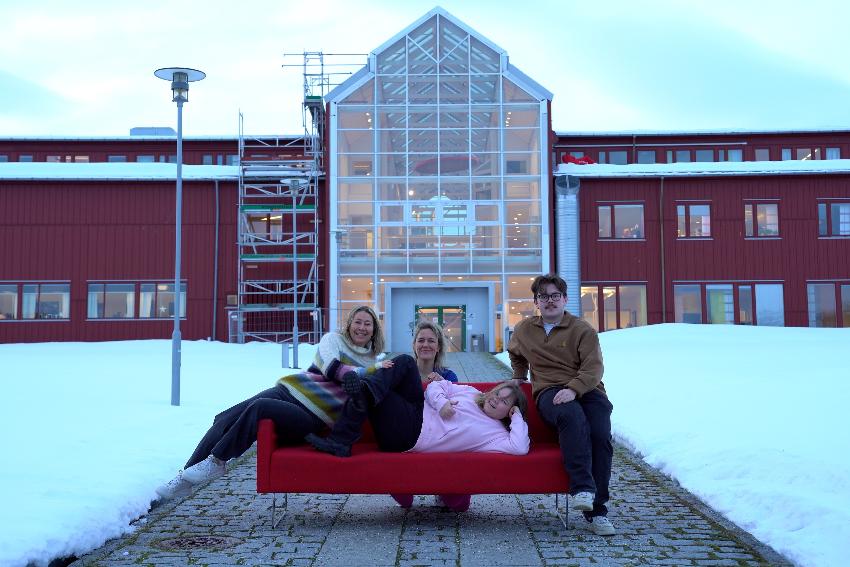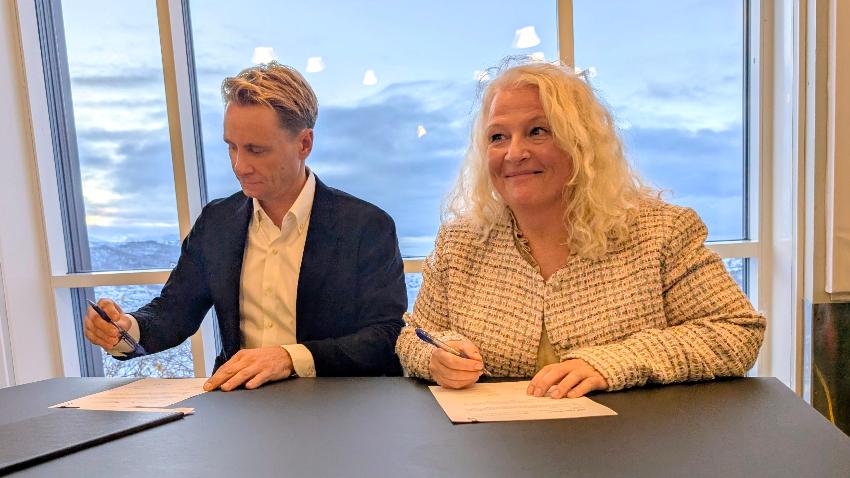New study warns that melting Arctic sea-ice could affect global ocean circulation
The warming climate in polar regions may significantly disrupt ocean circulation patterns, a new study indicates.


Scientists discovered that in the distant past, growing inflows of freshwater from melting Arctic sea-ice into the Nordic Seas likely significantly affected ocean circulation, sending temperatures plummeting across northern Europe.
“Our finding that enhanced melting of Arctic sea-ice likely resulted in significant cooling in northern Europe in the earth’s past is alarming,” says Mohamed Ezat from the iC3 Polar Research Hub, lead author of the new study.
“This reminds us that the planet’s climate is a delicate balance, easily disrupted by changes in temperature and ice cover.”

Earlier this month, dozens of climate scientists warned in an open letter that climate change is generating a “serious risk of a major ocean circulation change in the Atlantic [that] would have devastating and irreversible impacts”.
Changes in circulation patterns and heat distribution across the ocean
The Nordic Seas, located between Greenland and Norway, are a key area for oceanic heat transport and influence weather patterns far beyond their geographical boundaries.
During the early part of the Last Interglacial, over 100,000 years ago, global temperatures were warmer than present, ice volumes were smaller, and sea levels were significantly higher.
Mohammed Ezat’s research team has now linked the warming climate and enhanced melting of Arctic sea-ice during that era to changes in regional sea-surface temperature and ocean circulation.
As the sea-ice melted, it altered the salinity and density of the water and disrupted the normal flow of currents, leading to changes in circulation patterns and heat distribution across the ocean.
Understanding the dynamics of the Last Interglacial is crucial, he explains. Past warm periods in the earth’s history underscore the importance of feedback mechanisms in the climate system. As the Arctic continues to warm and sea-ice diminishes, further alterations in ocean currents and weather patterns may occur.
Many questions still remain unanswered
Ezat’s research team utilized a combination of biological, inorganic and organic geochemical tracers from sediment cores taken from the Nordic Seas. These cores act like time capsules, preserving information about past ocean conditions. By analyzing the chemical signatures within these sediments, the team was able to reconstruct past sea surface temperatures and salinity levels, sources of freshwater input and deep water formation processes.
Mohamed Ezat cautions that many questions still remain unanswered.
“We can learn a lot from the still open question of the Last Interglacial cooling in the Norwegian Sea and potential responsible processes” he says.
“We hope that our study provides a benchmark for climate modelers to utilize this time period to better constrain the impacts of ice changes on regional and global climate.”
The study used a multi-proxy approach (diatom, dinocyst, and planktic foraminiferal assemblages, sea ice biomarkers, planktic foraminiferal Na/Ca and Ba/Ca, and benthic foraminiferal assemblages) to reconstruct the development of sea ice, sea surface temperature, deep ocean convection as well as changes in freshwater input and their sources during the Last Interglacial period. It is available open access in Nature Communications.
-
Fiskeri- og havbruksvitenskap - bachelor
Varighet: 3 År -
Fiskeri- og havbruksvitenskap - master
Varighet: 2 År -
Akvamedisin - master
Varighet: 5 År -
Bioteknologi - bachelor
Varighet: 3 År -
Arkeologi - master
Varighet: 2 År -
Peace and Conflict Transformation - master
Varighet: 2 År -
Geosciences - master
Varighet: 2 År -
Biology - master
Varighet: 2 År -
Technology and Safety - master
Varighet: 2 År -
Physics - master
Varighet: 2 År -
Computational chemistry - master
Varighet: 2 År -
Law of the Sea - master
Varighet: 3 Semestre -
Biologi - bachelor
Varighet: 3 År -
Nordisk - årsstudium
Varighet: 1 År -
Luftfartsfag - bachelor
Varighet: 3 År -
Pedagogikk - bachelor
Varighet: 3 År -
Arkeologi - bachelor
Varighet: 3 År -
Likestilling og kjønn - årsstudium
Varighet: 1 År -
Historie - bachelor
Varighet: 3 År -
Geovitenskap- bachelor
Varighet: 3 År -
Kjemi - bachelor
Varighet: 3 År -
Samfunnssikkerhet - bachelor
Varighet: 3 År -
Samfunnssikkerhet - master
Varighet: 2 År -
Kunst - bachelor
Varighet: 3 År -
Kunsthistorie - master
Varighet: 2 År -
Religionsvitenskap - årsstudium
Varighet: 1 År -
Romfysikk, sivilingeniør - master
Varighet: 5 År -
Klima og miljøovervåkning, sivilingeniør - master
Varighet: 5 År -
Sosialantropologi - bachelor
Varighet: 3 År -
Bærekraftig teknologi, ingeniør - bachelor
Varighet: 3 År -
Historie - master
Varighet: 2 År -
Filosofi - bachelor
Varighet: 3 År -
Anvendt fysikk og matematikk, sivilingeniør - master
Varighet: 5 År -
Barnevernsarbeid - master
Varighet: 2 År -
Forfatterstudium 2 - årsstudium
Varighet: 1 År -
Fine Art - master
Varighet: 2 År -
Barnevern - bachelor
Varighet: 3 År -
Arctic Nature Guide - one year programme
Varighet: 1 År -
Sosialt arbeid - bachelor
Varighet: 3 År -
Arktisk friluftsliv og naturguiding - bachelor
Varighet: 3 År -
Arktisk friluftsliv - årsstudium
Varighet: 1 År -
Grunnskolelærerutdanning for 1.-7. trinn - master
Varighet: 5 År -
Kunsthistorie - årsstudium
Varighet: 1 År -
Vernepleie - bachelor
Varighet: 3 År -
Internasjonal beredskap - bachelor
Varighet: 3 År -
Barnevern - bachelor
Varighet: 3 År -
Vernepleie - bachelor (deltid)
Varighet: 4 År -
Landskapsarkitektur - master
Varighet: 5 År -
Grunnskolelærerutdanning for 5.-10. trinn - master
Varighet: 5 År -
Kvensk og finsk - bachelor
Varighet: 3 År


